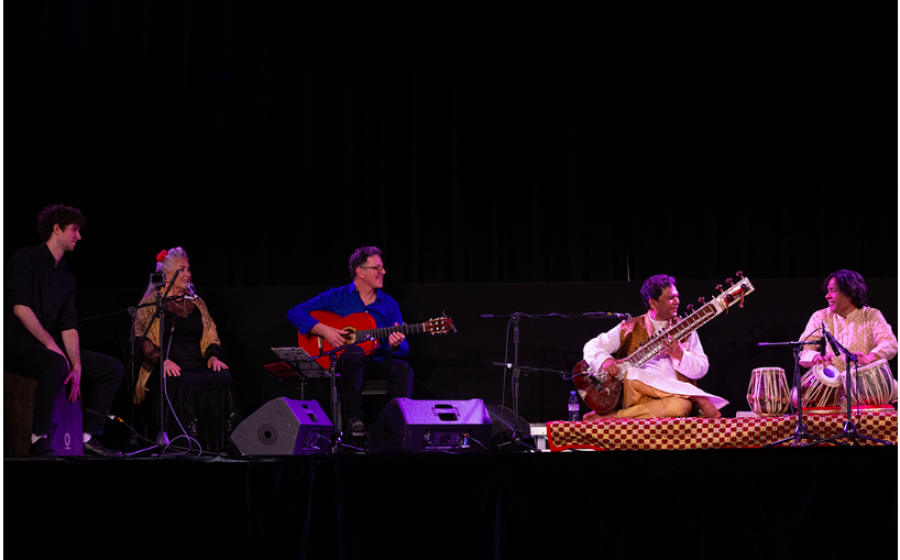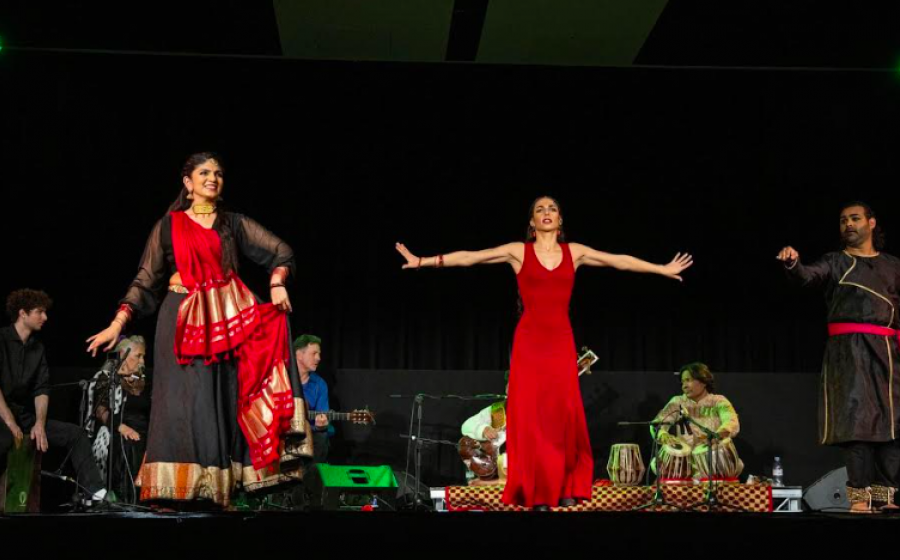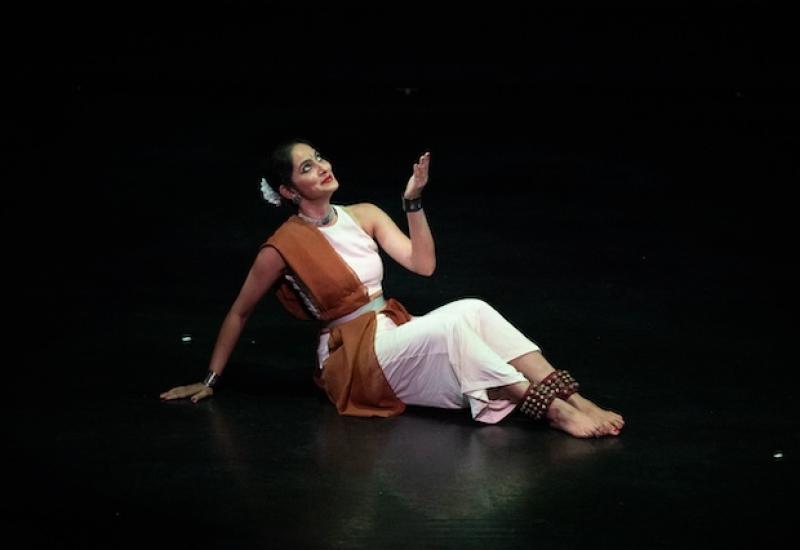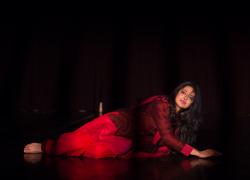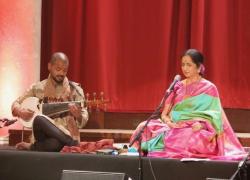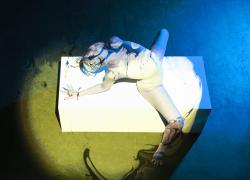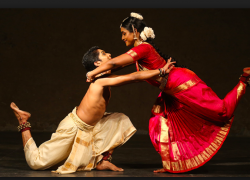Kalasetu – Building Cultural Bridges
Kalasetu, Bridging Cultural Bridges
March 24th 2024
Fairfield Halls,
Croydon
Organised by Subrang Arts as part of 'This is Croydon' London Borough of Culture
Reviewed by Parvati Nair
Photos: Vipul Sangoi
Kalasetu brought together eight artists, four each working in musical and dance traditions from India and Spain respectively. Using rhythm, vocals, instrumental music and dance, the artists came together to explore synergies and ways of cross-cultural dialogue through performance. Most striking was the interplay of sitar and guitar, as well as that between kathak and flamenco dance. With the exception of the flamenco singer, all the artists are based in the United Kingdom and many were emerging artists, whose careers show much promise.
Key to the performance was Mehboob Nadeem, from the Agra Gharana, who displayed expertise and mastery both with the sitar and in singing rhythms. Accompanying throughout on tabla was Hanif Khan, also a skilled musician, from the Delhi Gharana. Many of the pieces performed took their cue from the ability of the guitarist Ramón Ruiz with different flamenco rhythms. The opening piece ‘Calle Lunga’, a collaboration between himself and Mehboob Nadeem, was also composed by him. Ruiz displayed expertise with many of the major palos of flamenco, from cante jondo or deep song to cante chico, the lighter, more joyful rhythms, such as tangos and alegrías. His son Sebastián accompanied him and others on the cajón.
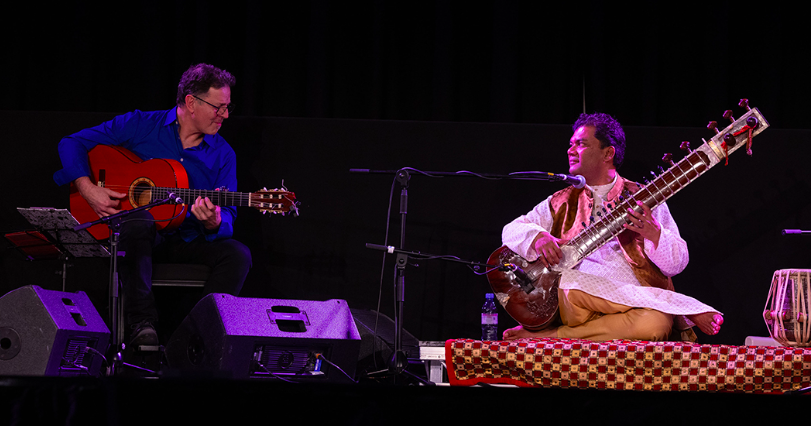
The flamenco singer Natalia Marín, who comes from Seville, offered a strong and clear rendition of many key palos, as well as an ability to adapt her singing to the slower pace of the Hindustani music when needed.
The dancers were eye-catching. Rebeca Ortega displayed artistry, though still a young and emerging performer. Ortega has a particular style when dancing flamenco that is somewhat jagged, strong but also slightly unsettling. Her training at Madrid’s renowned academy of Amor de Dios came through in her body work and style, as also the possible influence of contemporary dance in some of her moves. While she danced some very traditional pieces from the flamenco repertoire, her style is not traditional.
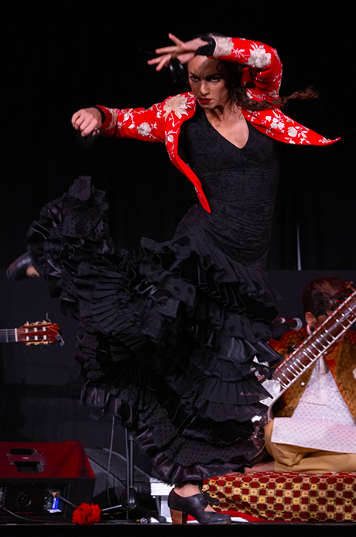
The kathak dancers were Mira Salat and Shyam Nayan. Both were exceptionally skilled, with perfect timing and a sense of real enjoyment in dance. Nayan is an emerging dancer who trained with Subrang Arts. His performance of the traditional ‘Tarana’ was mesmerising and powerful.
Mira Salat, a more established dancer who trained at Pagrav Dance Company, has a track record of performances and teaching. She showed great skill and grace on stage. Her ability to engage with flamenco and its accents yet still dance traditional kathak, was quite magical.
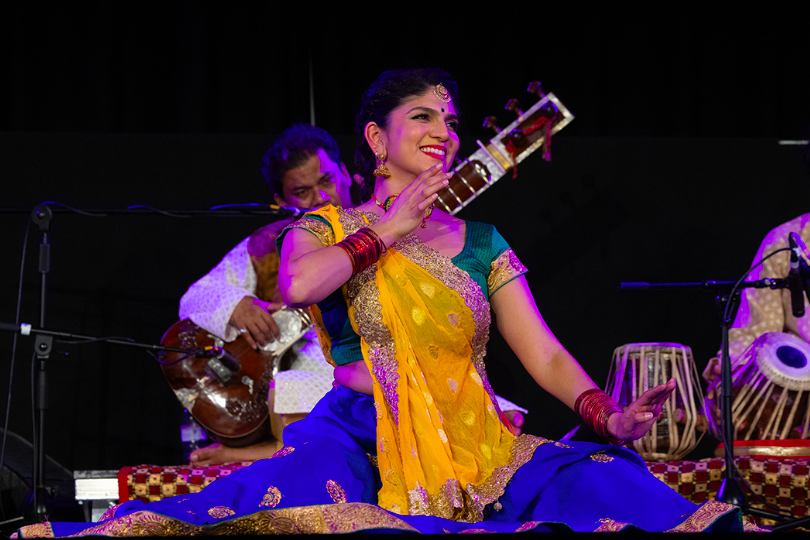
The deep and rich voice of Nadeem provided great depth and rigour. However, Ruiz’s contributions were also fundamental, as many of the pieces drew from flamenco to shape the show. The first few items on the programme, ‘Calle Lunga’ and ‘Jardines de Bidalon’ juxtaposed Indian and Spanish music as separate forms, but they gradually blended quite harmoniously as the performance progressed. The ‘Tango,’ with which the second half of the performance opened and that involved all artists performing together, was exemplary of how kathak and flamenco can dialogue and overlap at will.
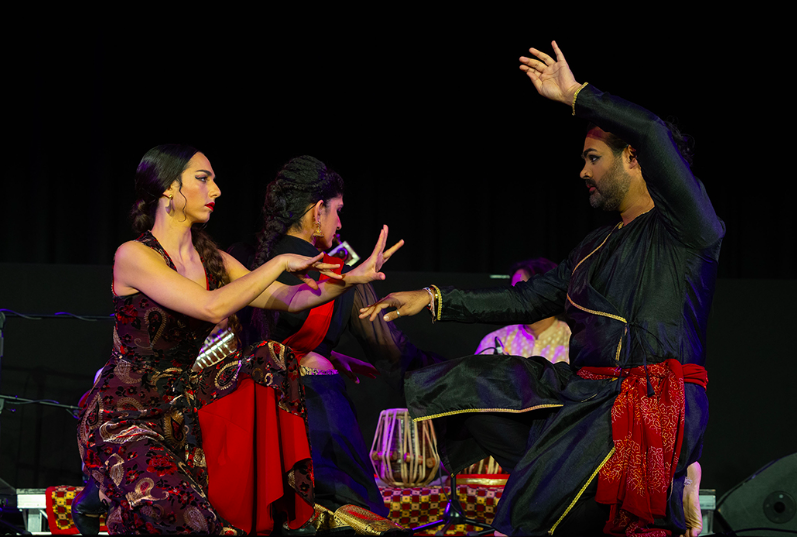
This effort at cross-cultural collaboration, by no means the first example of dialogue between kathak and flamenco, draws on the supposed origins of gypsies in India and the traditions transmitted across centuries and geographies whereby kathak has contributed to flamenco. Certainly, it was clear that the three dancers had worked together to produce synergies, helped by coordinated colours in terms of dress and well-timed arm movements and footwork. The dance performances were seamless, despite very different energies and styles from the three dancers. Nevertheless, the two dance and musical styles also manifest differences that should be noted and that perhaps cannot and should not be bridged: a historical difference, as well as one of class, whereby the courtly dance of kathak evokes a different time and sense of place from flamenco’s modern roots in the sub-cultures of southern Spanish cities, with their multifarious ethnic and cultural accents.
Perhaps what was most successful about this endeavour was the fact that each set of performers managed to keep in evidence the heritage of their own musical and dance styles, whilst also proving that tradition does not necessarily conflict with innovation and dialogue in music and dance. On the contrary, this effort offered some memorable pieces, such as the final “Bulerías,” one that both adhered to the set palo for ending a performance in flamenco, but then also displayed the power and poetry of kathak in music and movement.
The performance was almost sold out. The majority of the audience was South Asian, but clearly cosmopolitan enough to be able to fully appreciate both styles and their coming together. Spanish members of the audience provided jaleos to the flamenco artists, making the entire performance more interactive. The audience as a whole remained engaged throughout, as evidenced by the standing ovation that all the artists received at the end, proof of both their individual merits and the success of this endeavour by Subrang to build cultural bridges through the performing arts.
------
Parvati Nair is Professor of Hispanic, Cultural and Migration Studies at Queen Mary University of London. She publishes widely, mainly on the photography of displacement, migration and refugees. Her next book Displacement, Environments, and Photo-Politics in the Mediterranean: Migrant Sea is forthcoming from Routledge in 2024. She has also published quite extensively for academic and non-academic readers on flamenco music and has studied flamenco dance in London and in Barcelona for several decades.

